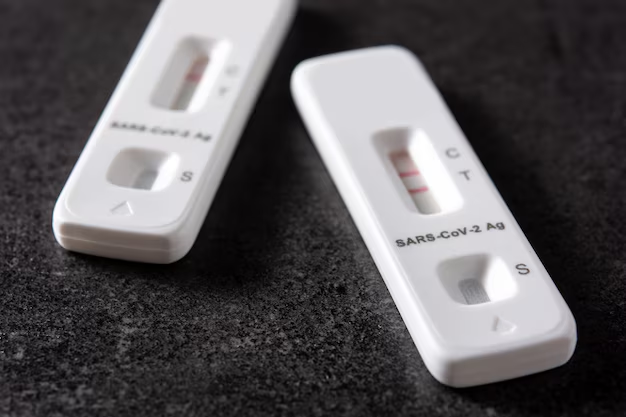Finding the Perfect Chill: Setting the Ideal Temperature for Your Refrigerator
A well-functioning refrigerator plays a crucial role in every household, ensuring that our foods remain fresh and safe to eat. Yet, one often overlooked detail is the importance of maintaining the correct temperature inside your refrigerator. Understanding the ideal settings can help extend the life of your produce, reduce energy bills, and prevent harmful bacterial growth. Let’s dive into everything you need to know about getting your refrigerator temperature just right.
Why Temperature Settings Matter
Keeping your fridge at the proper temperature isn't just a suggestion; it’s a necessity for food safety. The right temperature slows the growth of bacteria in perishable items, making your food safe for consumption for extended periods.
Food Safety and Preservation
Food safety is paramount. Bacteria like Salmonella and E. coli flourish between 40°F and 140°F, known as the "danger zone." The goal is to maintain a temperature that falls below this threshold, helping to inhibit bacterial spread. Moreover, the right temperature keeps food texture, flavor, and nutritional value intact longer.
Additionally, maintaining proper refrigeration settings can avoid waste and spoilage. Whether it’s wilting lettuce, soggy strawberries, or moldy leftovers, incorrect temperatures can lead to food going bad sooner than expected.
Energy Efficiency
A well-calibrated refrigerator conserves energy, reducing your electric bill over time. If it’s too cold, the appliance works overtime and becomes less efficient. Conversely, less chilling means a reduced lifespan and potential maintenance issues. By finding and setting the temperature correctly, the fridge performs optimally, saving you money on energy costs.
Ideal Temperature Guidelines
General Recommendation
The consensus for the optimal refrigerator temperature is 40°F (4°C) or below, ideally around 37°F (3°C). This range strikes a balance between slowing bacterial growth and ensuring that food doesn’t freeze.
Your freezer, on the other hand, should be set to 0°F (-18°C) to keep frozen goods in peak condition.
Variations and Considerations
Different items in the fridge may require slight raises or drops in temperature:
- Dairy Products: Milk and yogurt preserve well at 37°F (3°C) or below.
- Meats and Fish: Raw meat and fish should be kept in the coldest part of the fridge around 32°F to 36°F (0°C to 2°C).
It's also important to recognize that outside conditions, like a heatwave or a power outage, may temporarily influence fridge temperatures. Regularly monitoring is essential.
Tools and Tips for Monitoring Temperature
Use a Fridge Thermometer
Investing in a reliable refrigerator thermometer can add peace of mind. They are straightforward to use and provide accurate readings, essential for regular checks.
Digital Displays
Some modern refrigerators come equipped with digital temperature displays that offer precision. Adjust these settings as needed and check them periodically to ensure accurate readings.
Regular Checks and Adjustments
- Weekly Monitoring: Make it a habit to check your refrigerator temperature weekly.
- Rearrange Contents: Overstuffing reduces circulation, causing cold spots. Organize for airflow.
- Seasonal Adjustments: Fridges may need different settings based on ambient room temperature.
Implementing Best Practices
Organize Smartly
Top shelves maintain a relatively constant temperature, ideal for leftovers and drinks. Lower shelves and crisper drawers are better for vegetables, eggs, and raw meats. Proper organization also ensures proper airflow, which is vital for efficient cooling.
Avoid Overloading
A crowded fridge restricts airflow, making it harder to maintain stable temperatures. Keep shelves comfortably full but avoid overpacking. This not only ensures proper cooling but reduces energy consumption, too.
Consider Appliance Age and Maintenance
Older models or those needing repair might struggle to maintain settings. Ensuring that your appliances are in good working order helps maintain consistent temperatures and minimizes energy usage. Regular maintenance like cleaning the coils improves efficiency.
A Quick Recap: Refrigerator Temperature Settings 📝
Here's a handy summary to keep your refrigerator running efficiently:
- Set Fridge: Ideal is 37°F (3°C).
- Freezer: Keep at 0°F (-18°C).
- Avoid Overcrowding: Ensures air circulation.
- Regular Checks: Weekly temperature verifications.
- Watch for Seasonal Changes: Adjust for room temperature shifts.

The Broader Impact
Besides directly affecting your kitchen, maintaining optimal temperatures plays into broader themes of sustainability and responsibility. Wasting less food, reducing energy use, and maintaining appliance health speaks to a more sustainable household.
In summary, proper temperature management within your refrigerator is a straightforward way to impact household efficiency positively. While it may seem minor, the consideration and adjustment of temperature settings are crucial for safety, performance, and energy conservation. By implementing informed practices and regular monitoring, anyone can maintain this essential kitchen appliance at its best.
